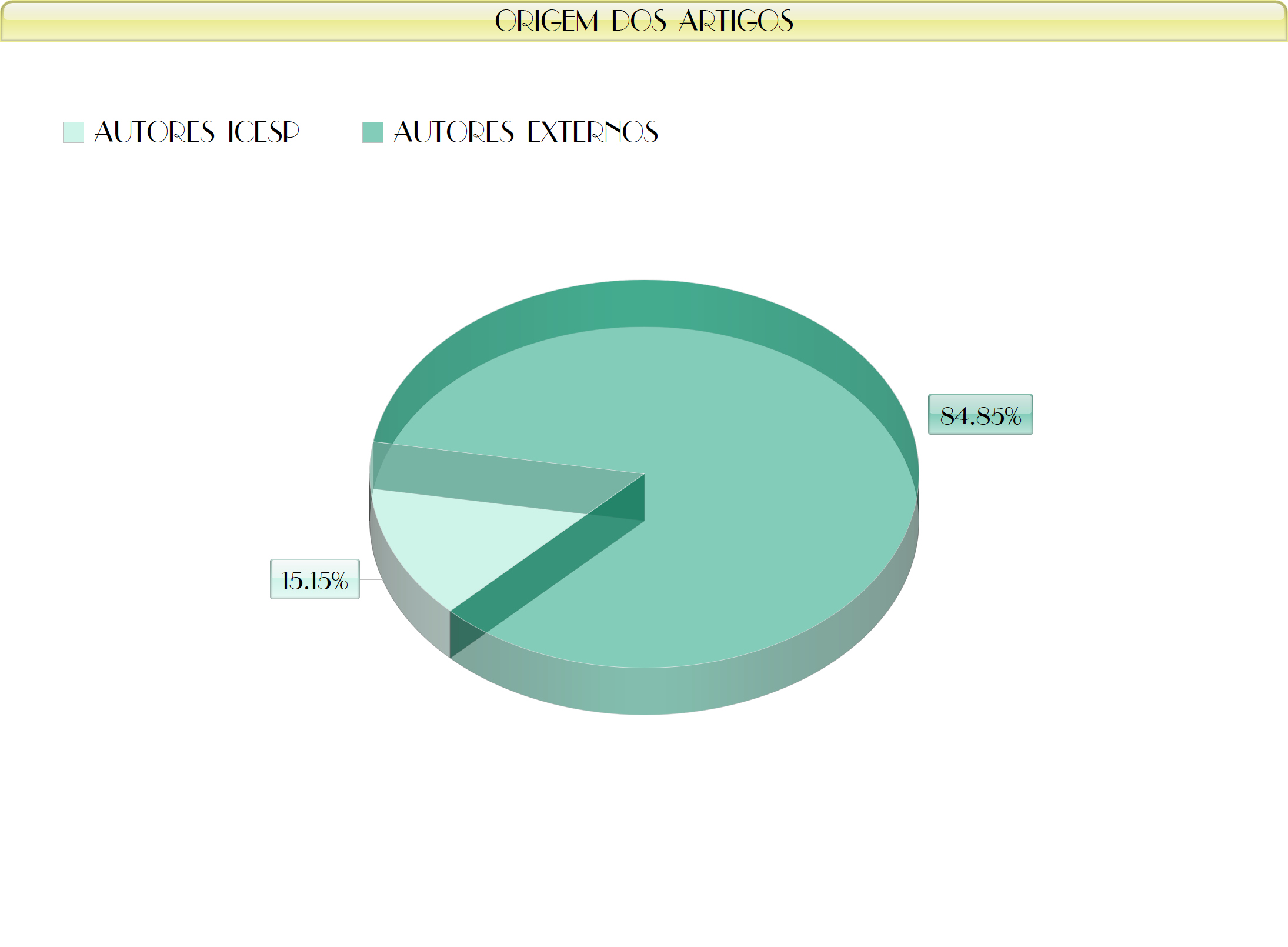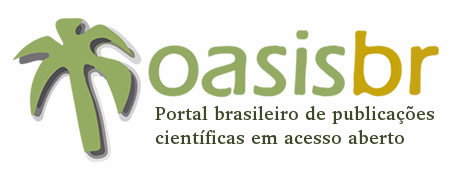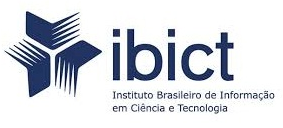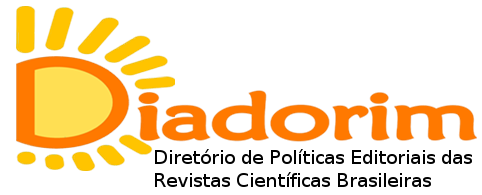ALONGAMENTO ESTÁTICO MONOARTICULAR AUMENTA A AMPLITUDE DE MOVIMENTO E ALTERA O SINERGISMO MUSCULAR DURANTE O EXERCÍCIO LEG PRESS ISOMÉTRICO
Resumo
Resumo
Devido ao sincronismo muscular necessário para a execução de um exercício multiarticular como o leg press, o alongamento estático agudo monoarticular poderia produzir alterações no controle articular individual afetando, desta forma, o controle dos músculos primários em outras articulações a fim de manter a ação isométrica. Assim, o presente estudo avaliou o efeito agudo de um protocolo de alongamento estático monoarticular, no sinergismo muscular, durante a execução do exercício leg press unilateral (LPU) isométrico. A amostra foi composta por 15 sujeitos adultos, hígidos, do sexo masculino (idade: 25±4 anos, estatura: 174±8 cm, massa corporal total: 71±6 kg, e 2±1 ano de experiência em musculação). O sinal eletromiográfico advindo dos músculos vasto lateral (VL) e glúteo máximo (GM) foram mensurados durante uma ação isométrica de 10" no exercício LPU contra 60% 1RM em três condições de alongamento estático monoarticular (6 séries de 45” / 15” e 70-90% da percepção subjetiva de desconforto): sem alongamento, alongamento do joelho (CAQ) e alongamento de quadril (CAG). Uma ANOVA (2x2) foi utilizada para verificar as diferenças entre condições (CAQ e CAG) e músculos (VL e GM) para as variáveis dependentes: eletromiografia integrada (IEMG) e frequência mediana (FMed). Houve aumento da amplitude máxima passiva para articulação do quadril e do joelho (P<0,001). Os resultados da IEMG revelaram diferenças significantes entre as condições CAQ e CAG para o músculo vasto lateral (P=0,004; d=1,22; Δ%=12,1%) e glúteo máximo (P=0,024; d=1,44; Δ%=35,5). Foi observada diferença significante entre músculos apenas na condição CAQ (P=0,012; d=1,5; Δ%=36,9). Concluiu-se que o protocolo de alongamento estático monoarticular aumentou a amplitude de movimento em ambas as articulações avaliadas e afetou o sinergismo muscular durante a execução do exercício LPU isométrico.
Abstract
Due to muscular synchronism of a multi-joint exercise such as the leg press, an acute single-joint static-stretching may produce changes in individual joint control and affect the primer muscle control in correlated joints in order to maintain the isometric action. Thus, the present study aimed to evaluate the acute effect of a single-joint static-stretching protocol on muscle synergy during a submaximal isometric leg press exercise. The sample was composed by fifteen adult subjects, healthy male (age: 25±4 years, height: 174±8 cm, total body mass: 71±6 kg, and 2±1 year of experience in resistance training). The electromyographic signal from the muscle Vastus Lateralis (VL) and Gluteus Maximus (GM) were measured during 10sec of a single-leg isometric contraction in leg press exercise against 60%1RM, in three conditions of single-join static-stretching protocols (6sets x 45sec/15sec, and 70-90% of the point of discomfort): without stretching, knee flexion (CAQ) and hip flexion and external rotation (CAG). An ANOVA (2 x 2) was used to evaluate differences between conditions (CAQ and CAG) and muscles (VL and GM) for the dependent variables: IEMG, median frequency. There was an increase of maximum amplitude passive to the hip joint and the knee (P < 0.001). The IEMG results revealed significant differences between conditions CAQ and CAG for the Vastus Lateralis muscle (P=0.004; d=1.22; Δ%=12.1%), and Gluteus Maximus (P=0.024; d=1.44; Δ%=35.5). Significant difference was observed between muscles only to CAQ (P=0.012; d=1.5; Δ=36.9%). It was concluded that the single-joint static-stretching protocol increased the range of motion in both joints (knee and hip), and affected the muscular synergy during the single-leg isometric leg press exercise.
figshare DOI: 10.6084/m9.figshare.8198393
Palavras-chave
Texto completo:
PDFReferências
Rubini, E.C., A.L. Costa, and P.S. Gomes, The effects of stretching on strength performance. Sports Med, 2007. 37(3): p. 213-24.
Behm, D.G. and A. Chaouachi, A review of the acute effects of static and dynamic stretching on performance. Eur J Appl Physiol., 2011. 111: p. 2633-2651.
Behm, D.G. and A. Kibele, Effects of differing intensities of static stretching on jump performance. Eur J Appl Physiol., 2007. 101: p. 587-594.
Behm, D.G., D.C. Button, and J.C. Butt, Factors affecting force loss with prolonged stretching. Can J Appl Physiol, 2001. 26(3): p. 261-72.
Cornwell, A., A.G. Nelson, and B. Sidaway, Acute effects of stretching on the neuromechanical proprieties of the triceps surae muscle complex. European Journal of Applied Physiology, 2002. 86: p. 428-434.
Wallmann, H.W., J.A. Mercer, and W. McWhorter, Surface electromyougraphic assessment of the effects of static stretching of the gastrocnemius on vertical jump performance. J Strength Cond Res, 2005. 19(3): p. 684-688.
Behm, D.G. and A. Chaouachi, A review of the acute effects of static and dynamic stretching on performance. European Journal Applied Physiology, 2011. 111(11): p. 2633-2651.
Rubini, E.C., A.L. Costa, and P.S. Gomes, The effects of stretching on strength performance. Sports Med, 2007. 37(3): p. 213-224.
Kay, A.D. and A.J. Blazevich, Effect of acute static stretch on maximal muscle performance: a systematic review. Med Sci Sports Exerc, 2012. 44(1): p. 154-64.
Herda, T.J., et al., Acute effects of static versus dynamic stretching on isometric peak torque, electromyography, and mechanography of the biceps femoris muscle. Journal of Strength and Conditioning Research, 2008. 22(3): p. 809-817.
Cramer, J.T., et al., Acute effects of static stretching on characteristics of the isokinetic angle - torque relationship, surface electromyography, and mechanomyography. Journal Sports Science, 2007. 25(6): p. 687-698.
Peck, E., et al., The effects of stretching on performance. Curr Sports Med Rep, 2014. 13(3): p. 179-85.
Cornwell, A., A.G. Nelson, and B. Sidaway, Acute effects of stretching on the neuromechanical properties of the triceps surae muscle complex. Eur J Appl Physiol, 2002. 86(5): p. 428-434.
Marek, S.M., et al., Acute Effects of Static and Proprioceptive Neuromuscular Facilitation Stretching on Muscle Strength and Power Output. Journal Athletic Training, 2005. 40(2): p. 94-103.
Serpa, E.P., G.B. Vilela Junior, and P.H. Marchetti, Aspectos biomêcanicos da unidade músculo-tendínea sob efeito do alongamento. Revista Centro de Pesquisas Avançadas em Qualidade de Vida, 2014. 6(1).
Knudson, D., The Biomechanics of Stretching. Journal of Exercise Science & Physiotherapy, 2006. 2: p. 3-12.
Ozkaya, N. and M. Nordin, Fundamentals of Biomechanics: Equilibrium, Motion, and Deformation. 2 nd ed1999, New York: Springer.
Power, K., et al., An acute bout of static stretching: effects on force and jumping performance. Med Sci Sports Exerc, 2004. 36(8): p. 1389-96.
Marek, S.M., et al., Acute Effects of Static and Proprioceptive Neuromuscular Facilitation Stretching on Muscle Strength and Power Output. J Athl Train, 2005. 40(2): p. 94-103.
Morse, C.I., et al., The acute effect of stretching on the passive stiffness of the human gastrocnemius muscle tendon unit. J Physiol, 2008. 586(1): p. 97-106.
Avela, J., H. Kyrolainen, and P.V. Komi, Altered reflex sensitivity after repeated and prolonged passive muscle stretching. J Appl Physiol, 1999. 86(4): p. 1283-91.
Behm, D.G. and A. Chaouachi, A review of the acute effects of static and dynamic stretching on performance. Eur J Appl Physiol, 2011. 111(11): p. 2633-51.
Cramer, J.T. and T.J. Housh, The acute effects of static stretching on peak torque, mean power output, electromyography, and mechanography. European Journal of Applied Physiology, 2005. 93(5-6): p. 530-539.
Fowles, J.R., D.G. Sale, and J.D. MacDougall, Reduced strength after passive stretch of the human plantarflexors. Journal of Applied Physiology, 2000. 89: p. 1179-1188.
Gurjão, A.L.D., et al., Acute effect of static stretching on rate of force development and maximal voluntary contraction in older women. Journal of Strength and Conditioning Research, 2009. 23(7): p. 2149-2154.
Avela, J., et al., Neural and mechanical responses of the triceps surae muscle group after 1h of repeated fast passive stretches. J Appl. Physiol., 2004. 96: p. 2325-2332.
Bley, A.S., P.S.M. Nardi, and P.H. Marchetti, Alongamento passivo agudo não afeta a atividade muscular máxima dos isquiotibiais. Motricidade, 2012. 8(4): p. 80-86.
Behm, D.G., D.M.M. St-Pierre, and D. Perez, Muscle inactivation: assessment of interpolated twitch technique. Journal of Applied Physiology, 1996. 81(5): p. 2267-2273.
Behm, D.G., D. Buttom, and J. Butt, Factors affecting force loss with prolonged stretching. Can J Appl Physiol. , 2001. 26: p. 262-272.
Beedle, B., et al., Pretesting static and dynamic stretching does not affect maximal strength. Journal of Strength and Conditioning Research, 2008. 22(6): p. 1838-1843.
Doorenbosch, C.A.M. and G.J.V.I. Schenau, The role of mono- and bi-articular muscles during contact leg tasks in man. Human Movement Science, 1995. 14: p. 279-300.
Kandel, E.R., J.H. Schawartz, and T.M. Jessell, Principles of Neural Science2000: McGraw-Hill Companies.
Enoka, R.M., Neuromechanics of Human Movement. 4 ed2008: Human Kinetics.
Enoka, R.M., Bases neuromecanicas da cinesiologia. 2 ed2000: Manole.
Eng, J., Sample Size Estimation: How many individuals should be studied? Radiology, 2003. 227(2): p. 309-313.
Beck, T.W., The importance of a priori sample size estimation in strength and conditioning research. Journal of Strength and Conditioning Research, 2013. 27(8): p. 2323-2337.
Maulder, P. and J. Cronin, Horizontal and vertical jump assessment: reliability, symmetry, discriminative and predictive ability. Physical Therapy in Sport, 2005. 6(2): p. 74-82.
Brown, L.E., Treinamento de Força.2008, São Paulo: Manole.
Marchetti, P.H., et al., Upper limb static-stretching protocol decreases maximal concentric jump performance. Journal of Sports Science and Medicine, 2014. 13: p. 945-950.
Behm, D.G. and A. Chaouachi, A review of the acute effects of static and dynamic stretching on performance. European Journal of Applied Physiology, 2011. 111: p. 2633-2651.
Behm, D.G. and A. Kibele, Effects of differing intensities of static stretching on jump performance. European Journal of Applied Physiology, 2007. 101(587-594).
Hermens, H.J., et al., Development of recommendations for SEMG sensors and sensor placement procedures. J Electromyogr Kinesiol. , 2000. 10(5): p. 361-74.
Winter, D.A., Biomechanics and motor control of human movement, ed. A.W.I. Publication1990, USA.
Rhea, M.R., Determining the magnitude of treatment effects in strength training research through the use of the effect size. Journal of Strength and Conditioning Research, 2004. 18(4): p. 918-920.
Lima, B.N., et al., The Acute Effects of Unilateral Ankle Plantar Flexors Static- Stretching on Postural Sway and Gastrocnemius Muscle Activity during Single-Leg Balance Tasks. J Sports Sci Med., 2014. 13(3): p. 564-570.
da Silva, J.J., et al., Unilateral Plantar Flexors Static-Stretching Effects on Ipsilateral and Contrala-teral Jump Measures. J Sports Sci Med., 2015. 14: p. 315-321.
Taylor, D.C., et al., Viscoelastic properties of muscle-tendon units. The biomechanical effects of stretching. Am J Sports Med, 1990. 18(3): p. 300-9.
Magnusson, S.P., et al., A mechanism for altered flexibility in human skeletal muscle. Journal of Physiology, 1996. 497 ( Pt 1): p. 291-8.
Weppler, C.H. and S.P. Magnusson, Increasing muscle extensibility: a matter of increasing length or modifying sensation? Phys Ther, 2010. 90(3): p. 438-49.
Alter, M.J., Ciência da Flexibilidade. 3 ed2010. 368.
Gajdosik, R.L., Passive extensibility of skeletal muscle: review of the literature with clinical implications. Clin Biomech (Bristol, Avon), 2001. 16(2): p. 87-101.
Rubini, E.C. and P.S.C. Gomes, A Titina e Suas Implicações na Elasticidade Muscular – Breve Revisão. Revista brasileira de Fisiologia do Exercício, 2004. 3(1).
Knudson, D., Fundamentals of Biomechanics. Vol. 2nd. 2007: Springer.
Behm, D.G., K. Power, and E. Drinkwater, Comparison of interpolation and central activation ratios as measures of muscle inactivation. Muscle and Nerve, 2001. 24(7): p. 925-934.
Trajano, G.S., et al., Contribution of central vs. peripheral factors to the force loss induced by passive stretch of the human plantar flexors. Journal of Applied Physiology, 2013. 115: p. 212-218.
Trajano, G.S., et al., Intermittent Stretch Reduces Force and Central Drive more than Continuous Stretch. Medicine & Science in Sports & Exercise, 2014. 46(5): p. 902-910.
Amann, M., et al., Peripheral fatigue limits endurance exercise via sensory feedback-mediated reduction in spinal motoneuronal output. J. Appl. Physiol., 2013. 115(3): p. 355-364.
Hof, A.L., Muscle mechanics and neuromuscular control. J Biomech, 2003. 36(7): p. 1031-8.
Shumway-Cook, A. and M.H. Woollacott, Motor Control: Translating Research Into Clinical Practice2007: Lippincott Williams & Wilkins.
Ting, L.H. and J.L. McKay, Neuromechanics of muscle synergies for posture and movement. Current Opinion in Neurobiology, 2008. 17: p. 1-7.
Lombard, W.P., The action of two-joint muscles. Am. J. of Physics Education, 1903. 9: p. 141-145.
Gurjao, A.L., et al., Acute effect of static stretching on rate of force development and maximal voluntary contraction in older women. J Strength Cond Res, 2009. 23(7): p. 2149-54.
Marek, S.M., et al., Acute effects of static and proprioceptive neuromuscular facilitation stretching on muscle strenght and power output. Journal of Athletic Training, 2005. 40(2): p. 94-103.
Marchetti, P.H., et al., Intermitent and continuous stretching increase range of motion and decrease force on wrist flexors. Rev Bras Med Esporte, 2015. 21(6): p. 446-450.
Apontamentos
- Não há apontamentos.
Revista Brasileira de Pesquisa em Ciências da Saúde - RBPeCS - ISSN: 2446-5577
Indexadores:













